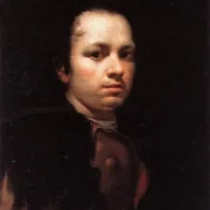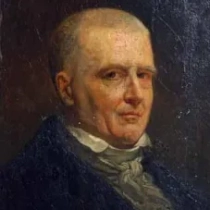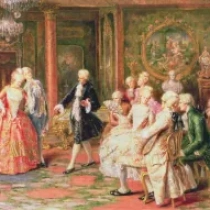 1704 - 1788
rococo
1704 - 1788
rococo
Description Maurice Quentin de La Tour
Maurice Quentin de La Tour, born in 1704 in Saint-Quentin, France, emerged as a masterful portraitist during the Rococo era. His life unfolded against the backdrop of Enlightenment ideals, and La Tour's artistic brilliance became a testament to the evolving spirit of his time.
La Tour's journey began with an apprenticeship under his father, a successful portraitist. However, his artistic prowess soon surpassed familial tutelage. Moving to Paris, he studied under the renowned pastel artist Joseph Vivien. La Tour's choice of pastels as his primary medium set him apart, allowing for a delicacy and luminosity that defined his portraiture.
His career took a decisive turn when, in 1737, he painted a portrait of the influential philosopher Voltaire. This marked the beginning of La Tour's ascendancy in the Parisian art scene. His unique ability to capture not only physical likeness but also the essence of his subjects in the play of light and shadow elevated him to prominence.
La Tour's innovation lay in his use of pastels to create striking contrasts and nuanced expressions. His portraits, characterized by a chiaroscuro effect, showcased a keen understanding of psychology and an acute observation of character. His sitters, ranging from nobility to intellectuals, were immortalized with a depth that transcended mere representation.
In 1746, La Tour was granted admission to the Académie Royale de Peinture et de Sculpture, solidifying his status as a master artist. His clientele expanded to include European royalty, and his fame crossed borders.
Despite his success, La Tour was known for his eccentricities. He shunned oil painting, adhering fervently to pastels, and his reclusive nature added an air of mystery to his persona. Yet, this eccentricity contributed to his allure, making him a celebrated and sought-after artist.
La Tour's later years saw a decline in popularity, partly due to changing artistic tastes. However, his legacy endured, influencing future generations of portraitists. His impact on pastel portraiture, characterized by its luminosity and psychological depth, remains a hallmark of the Rococo period.
Maurice Quentin de La Tour passed away in 1788, leaving behind a body of work that encapsulates the elegance and refinement of 18th-century portraiture. His ability to breathe life into the stillness of a portrait, capturing the essence of his subjects in the soft hues of pastels, secured his place as a luminary of the French Rococo movement.






No Comments Yet...